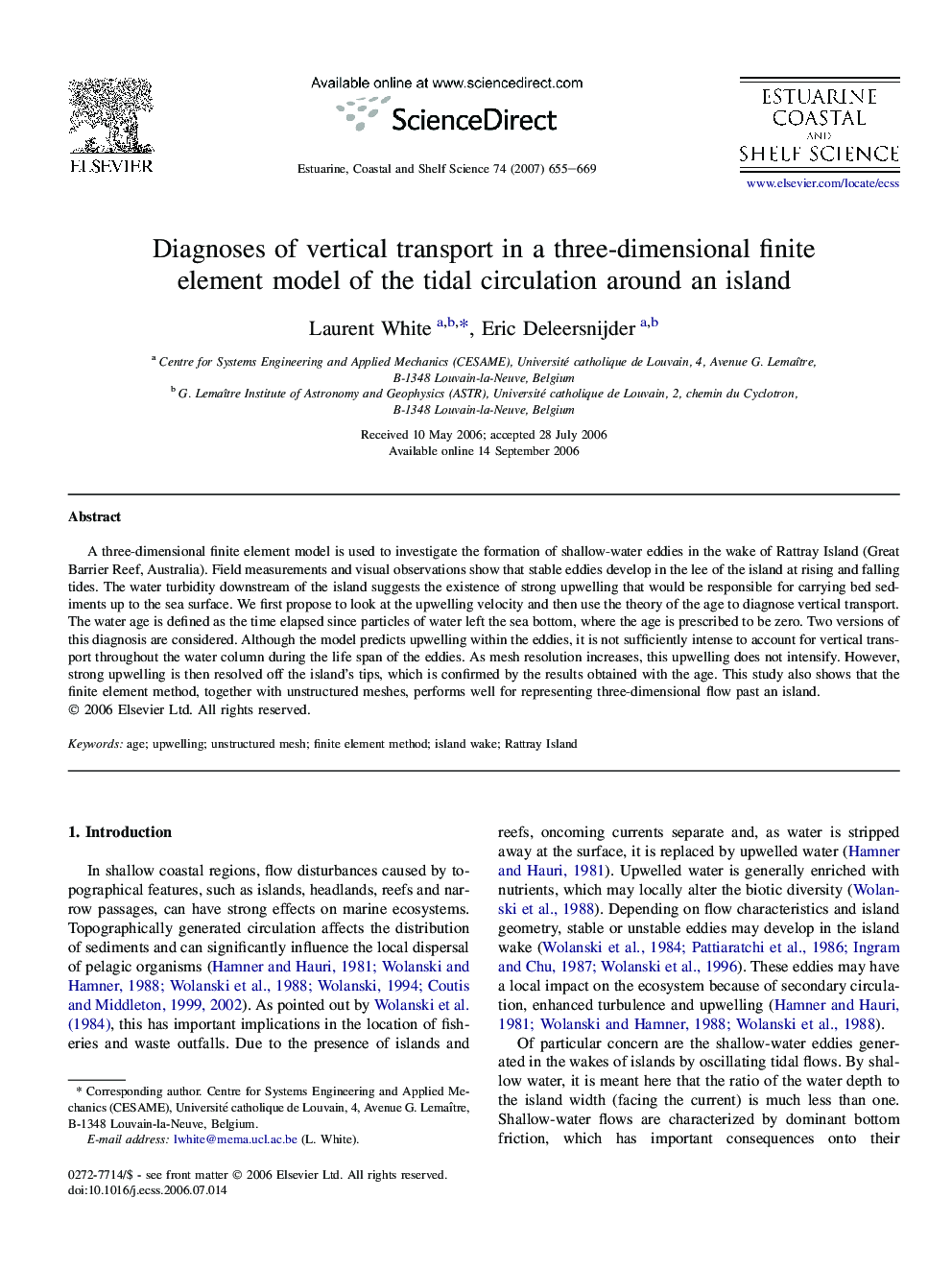| Article ID | Journal | Published Year | Pages | File Type |
|---|---|---|---|---|
| 4541843 | Estuarine, Coastal and Shelf Science | 2007 | 15 Pages |
Abstract
A three-dimensional finite element model is used to investigate the formation of shallow-water eddies in the wake of Rattray Island (Great Barrier Reef, Australia). Field measurements and visual observations show that stable eddies develop in the lee of the island at rising and falling tides. The water turbidity downstream of the island suggests the existence of strong upwelling that would be responsible for carrying bed sediments up to the sea surface. We first propose to look at the upwelling velocity and then use the theory of the age to diagnose vertical transport. The water age is defined as the time elapsed since particles of water left the sea bottom, where the age is prescribed to be zero. Two versions of this diagnosis are considered. Although the model predicts upwelling within the eddies, it is not sufficiently intense to account for vertical transport throughout the water column during the life span of the eddies. As mesh resolution increases, this upwelling does not intensify. However, strong upwelling is then resolved off the island's tips, which is confirmed by the results obtained with the age. This study also shows that the finite element method, together with unstructured meshes, performs well for representing three-dimensional flow past an island.
Related Topics
Physical Sciences and Engineering
Earth and Planetary Sciences
Geology
Authors
Laurent White, Eric Deleersnijder,
